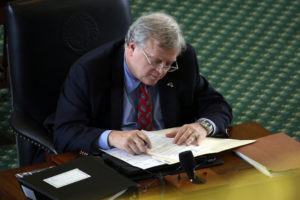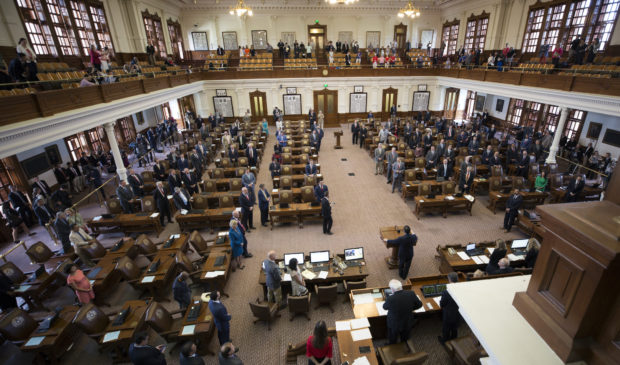Texas lawmakers may alter property tax collection. But how does it even work?
Wednesday, July 26, 2017 by
Audrey McGlinchy, KUT During a recent committee hearing on a property tax bill, a state lawmaker made an unusual comment: He praised Travis County.
“Travis County has the best record on reducing tax rate,” said state Sen. Paul Bettencourt (R-Houston), the author of Senate Bill 1. The bill, which has passed out of the full Senate and may soon head to the House for a vote, would restrict the amount of property taxes cities and counties can collect before triggering an election.
“We’re actually trying to get everybody to act like Travis County,” he said at a Senate Select Committee on Government Reform hearing Saturday.

And while Bettencourt didn’t include Austin in his praise, he was lauding a mechanism the city has also taken advantage of: lowering tax rates as additional property taxes – due to higher valuations and population growth – flood in. What does it all mean?
Cities and counties set a property tax rate each year, which is the amount of money the city collects per $100 of total property values.
“Let’s say you have a 50-cent tax rate and you have a $500,000 house; you would be paying $1,000 a year in city (property) taxes,” said Bennett Sandlin, executive director of the Texas Municipal League, which opposes SB 1. “Now, let’s say the Austin economy was booming even faster than it is and, just hypothetically, your house goes up to a million dollars in value. If the city kept the same 50-cent rate, it would then be collecting twice as much taxes next year because the value doubled.”
In a city like Austin, which has experienced growth and rising property values, lowering the tax rate means that the city collects less per $100 – but generally, more taxes overall. Last year, for example, City Council voted to lower the tax rate by almost 2 cents compared to the year before. Yet, the average property tax bill still rose and the city collected more money in property taxes than it did the year before.
But there’s a limit on that.
Currently, cities and counties can collect only 8 percent more in property taxes than they did the year before. (The rate to get to that additional 8 percent is called the rollback rate.) If the city wants to collect more than 8 percent, residents have the right to petition for a vote. SB 1 would limit the rollback rate to 4 percent and the election would be automatic.
According to Ed Van Eenoo, deputy chief financial officer with the city of Austin, there has never been an election over a rollback rate since the state instituted one in the late 1970s.
And while Van Eenoo said any lowering of the rollback rate by the state wouldn’t affect the city’s budget until Fiscal Year 2018-19, staff has already discussed having to rethink the upcoming budget to prepare.
“We would then have to perhaps rethink what we’re doing in FY 18 to better position ourselves for lower revenues in the future,” he said.
This story was produced as part of the Austin Monitor’s reporting partnership with KUT. Top Photo by Jorge Sanhueza-Lyon/KUT News.
The Austin Monitor’s work is made possible by donations from the community. Though our reporting covers donors from time to time, we are careful to keep business and editorial efforts separate while maintaining transparency. A complete list of donors is available here, and our code of ethics is explained here.
You're a community leader
And we’re honored you look to us for serious, in-depth news. You know a strong community needs local and dedicated watchdog reporting. We’re here for you and that won’t change. Now will you take the powerful next step and support our nonprofit news organization?








